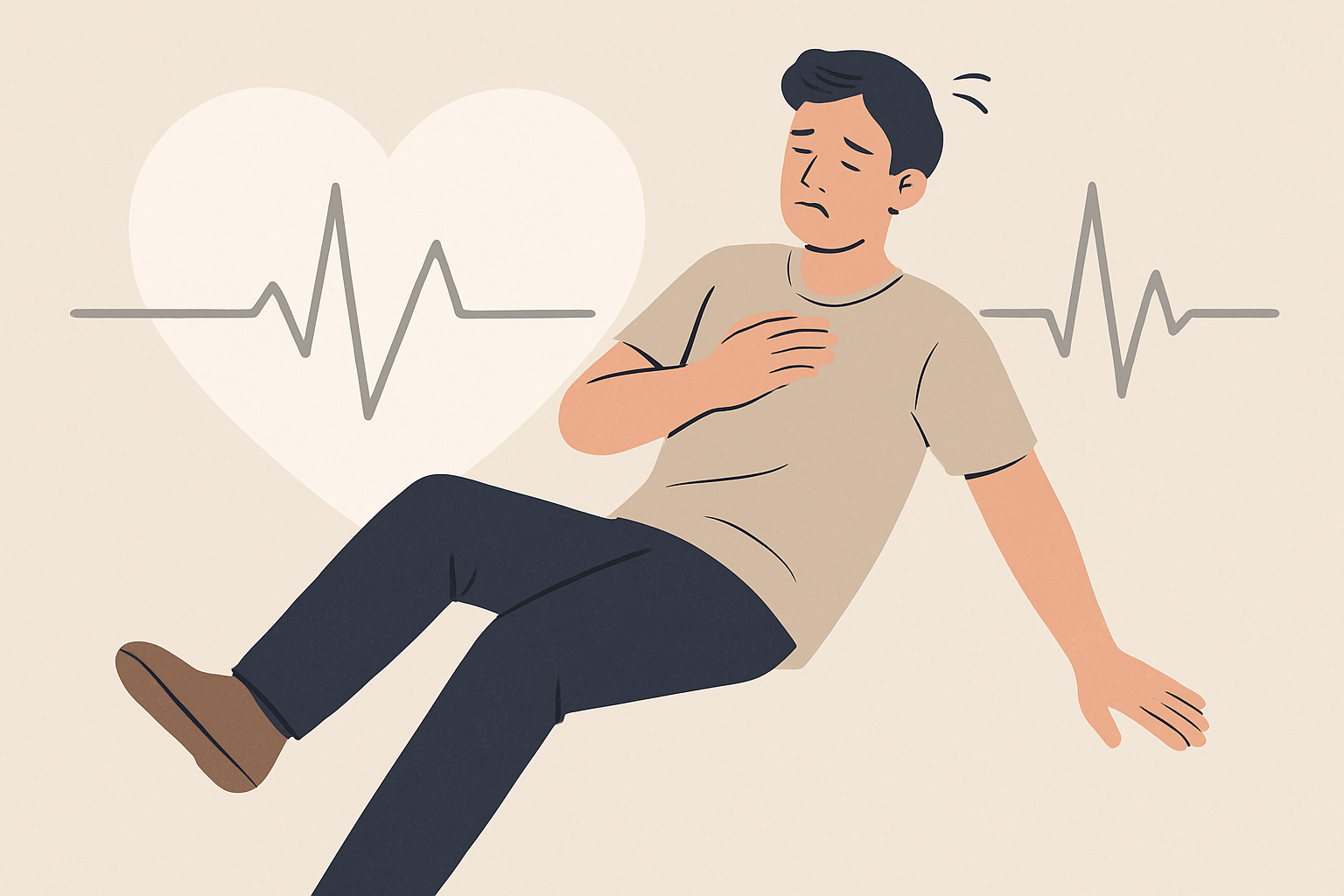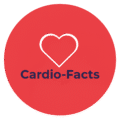
Syncope explained: Fainting is more than just a sudden blackout—it’s a symptom that could be harmless or a sign of a serious heart problem. This article breaks down what syncope is, why it happens, and when you should be concerned.
Syncope is more common than many think. It affects up to 40% of people at least once in their lifetime and can range from completely harmless to a warning sign of a serious heart condition.
In this article, we’ll break down what syncope is, what causes it, when it’s dangerous, and what you should do if you—or someone you care about—faints.
What Is Syncope?
Syncope is the medical term for what most people call fainting. It’s a sudden, brief loss of consciousness followed by spontaneous recovery. It’s not a disease in itself, but rather a symptom of an underlying problem—often involving the heart or the nervous system.
Syncope happens when blood flow to the brain temporarily drops, leading to a brief loss of consciousness.
Types of Syncope
Understanding the type of syncope is key to determining how serious it is.
1. Reflex (Neurally-Mediated) Syncope
This is the most common and generally benign type. It includes:
- Vasovagal syncope: Triggered by emotional stress, pain, or prolonged standing.
- Situational syncope: Occurs during urination, coughing, or swallowing.
- Carotid sinus syndrome: Due to pressure on the neck (tight collars, turning the head).
🧠 Cause: An exaggerated reflex that causes the heart rate and blood pressure to drop.
2. Orthostatic Hypotension
This occurs when you stand up too quickly, causing blood pressure to drop.
Common in:
- Elderly people
- Those taking blood pressure medications
- Patients with diabetes or Parkinson’s disease
💊 Some medications (diuretics, nitrates, antidepressants) can increase the risk.
3. Cardiac Syncope
The most serious form. Caused by:
- Arrhythmias (abnormal heart rhythms)
- Structural heart disease (aortic stenosis, cardiomyopathy)
- Ischemia (reduced blood supply)
⚠️ Cardiac syncope is a red flag: It is associated with a higher risk of sudden cardiac death and needs urgent evaluation.
Red Flags: When to Take Syncope Seriously
You should seek immediate medical attention if syncope occurs:
- During exercise
- Without any warning
- In a seated or lying position
- With chest pain or palpitations
- In people with known heart disease
- In the elderly, especially with injuries
How Is Syncope Diagnosed?
Doctors use a combination of:
- Detailed history and physical examination
- Electrocardiogram (ECG)
- Holter monitor or implantable loop recorder
- Tilt-table test
- Echocardiogram or cardiac MRI
According to the 2023 ESC Guidelines, the first step is always a good clinical history—it helps reach a diagnosis in up to 60% of cases without expensive tests.
Treatment and Prevention
Treatment depends on the cause:
| Type of Syncope | Treatment Options |
|---|---|
| Reflex syncope | Reassurance, physical counterpressure maneuvers (e.g., leg crossing), increasing fluid and salt intake |
| Orthostatic | Medication adjustment, compression stockings, slow position changes |
| Cardiac syncope | Pacemaker, ICD, ablation, or specific treatment for underlying heart disease |
Can Syncope Be Prevented?
In many cases, yes.
- Stay hydrated
- Avoid standing for long periods in hot weather
- Learn early warning signs (lightheadedness, nausea, sweating)
- In cardiac cases: treat the underlying condition aggressively
Final Thoughts
While fainting can be harmless, it can also be a sign of a serious heart problem. If you or someone you know experiences unexplained or repeated episodes of syncope—especially during exercise or without warning—don’t ignore it. Speak to your doctor or a cardiologist to get a proper diagnosis.
📚 Scientific sources and references
- Brignole M, Moya A, de Lange FJ, et al. 2023 ESC Guidelines for the diagnosis and management of syncope. European Heart Journal, 2023; 44(24):2190–2271. 👉 https://doi.org/10.1093/eurheartj/ehad191
- Shen WK, Sheldon RS, Benditt DG, et al. 2017 ACC/AHA/HRS Guideline for the Evaluation and Management of Patients With Syncope. Circulation, 2017;136(5):e60–e122. 👉 https://doi.org/10.1161/CIR.0000000000000499
- Kapoor WN. Syncope. New England Journal of Medicine, 2000;343(25):1856–1862. 👉 https://doi.org/10.1056/NEJM200012213432507
- Mayo Clinic. Orthostatic hypotension (postural hypotension) – Symptoms and causes. 👉 https://www.mayoclinic.org/diseases-conditions/orthostatic-hypotension/symptoms-causes/syc-20352085
💙 Take charge of your heart health!
Subscribe to our free newsletter for expert tips and get your complimentary guide “7 Proven Tips to Protect Your Heart After 40.”
👉 Join now
⚠️ Disclaimer: The content on Cardio-Facts is for informational and educational purposes only and does not constitute medical advice. Always consult a qualified healthcare professional regarding your health. Read our full disclaimer and legal policies.
